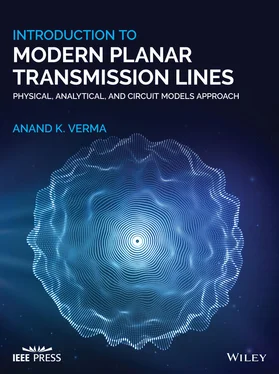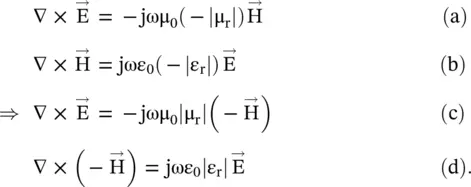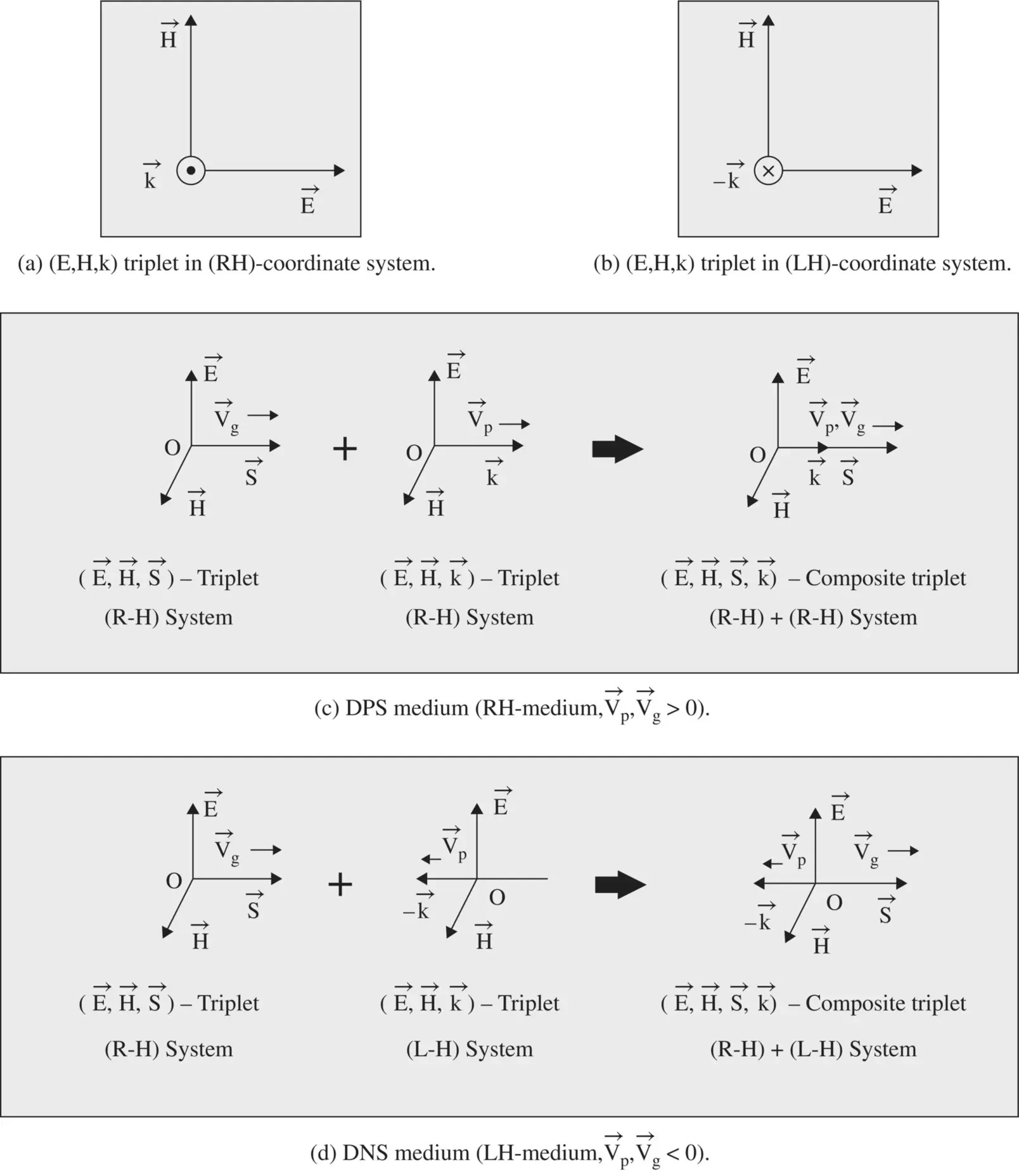Anand K. Verma - Introduction To Modern Planar Transmission Lines
Здесь есть возможность читать онлайн «Anand K. Verma - Introduction To Modern Planar Transmission Lines» — ознакомительный отрывок электронной книги совершенно бесплатно, а после прочтения отрывка купить полную версию. В некоторых случаях можно слушать аудио, скачать через торрент в формате fb2 и присутствует краткое содержание. Жанр: unrecognised, на английском языке. Описание произведения, (предисловие) а так же отзывы посетителей доступны на портале библиотеки ЛибКат.
- Название:Introduction To Modern Planar Transmission Lines
- Автор:
- Жанр:
- Год:неизвестен
- ISBN:нет данных
- Рейтинг книги:4 / 5. Голосов: 1
-
Избранное:Добавить в избранное
- Отзывы:
-
Ваша оценка:
Introduction To Modern Planar Transmission Lines: краткое содержание, описание и аннотация
Предлагаем к чтению аннотацию, описание, краткое содержание или предисловие (зависит от того, что написал сам автор книги «Introduction To Modern Planar Transmission Lines»). Если вы не нашли необходимую информацию о книге — напишите в комментариях, мы постараемся отыскать её.
rovides a comprehensive discussion of planar transmission lines and their applications, focusing on physical understanding, analytical approach, and circuit models
Planar transmission lines form the core of the modern high-frequency communication, computer, and other related technology. This advanced text gives a complete overview of the technology and acts as a comprehensive tool for radio frequency (RF) engineers that reflects a linear discussion of the subject from fundamentals to more complex arguments.
Introduction to Modern Planar Transmission Lines: Physical, Analytical, and Circuit Models Approach Emphasizes modeling using physical concepts, circuit-models, closed-form expressions, and full derivation of a large number of expressions Explains advanced mathematical treatment, such as the variation method, conformal mapping method, and SDA Connects each section of the text with forward and backward cross-referencing to aid in personalized self-study
is an ideal book for senior undergraduate and graduate students of the subject. It will also appeal to new researchers with the inter-disciplinary background, as well as to engineers and professionals in industries utilizing RF/microwave technologies.


 and the field vectors
and the field vectors  . They form the wavevector triplet (
. They form the wavevector triplet (  ) relations in the right‐hand (RH) coordinate system, shown in Fig (5.8a)for a DPS medium. Normally, the direction of the wavevector
) relations in the right‐hand (RH) coordinate system, shown in Fig (5.8a)for a DPS medium. Normally, the direction of the wavevector  determines the direction of the wave propagation, i.e. the direction of the phase velocity v p. However, the Poynting vector (
determines the direction of the wave propagation, i.e. the direction of the phase velocity v p. However, the Poynting vector (  ) given by equation ( 4.4.20) provides another power‐vector triplet (
) given by equation ( 4.4.20) provides another power‐vector triplet (  ) that determines the true direction of wave propagation. It is the direction of the energy flow from the source to a load. So the corresponding group velocity v g defines the direction of the wave propagation .
) that determines the true direction of wave propagation. It is the direction of the energy flow from the source to a load. So the corresponding group velocity v g defines the direction of the wave propagation . and
and  are identical, i.e. they are parallel vectors giving the relation
are identical, i.e. they are parallel vectors giving the relation  . Therefore, in a DPS medium, both the phase and group velocities are in the same direction giving
. Therefore, in a DPS medium, both the phase and group velocities are in the same direction giving  . It is shown in the first quadrant of Fig (5.7). The phase of the propagating EM‐wave in the DPS medium lags while traveling in the
. It is shown in the first quadrant of Fig (5.7). The phase of the propagating EM‐wave in the DPS medium lags while traveling in the  ‐direction .
‐direction . relations for the DNG medium are written as follows:
relations for the DNG medium are written as follows:
 :
:
 is shown in Fig (5.8b), i.e. in the left‐hand (LH) coordinate system, so the DNG medium is also called the left‐handed, LH‐medium . Both the power‐vector and wavevector triplets and their combination are further shown in Fig (5.8d). The field vectors are rotated to maintain the power flow in a positive direction. Figure (5.8d)shows that the phase and group velocities are opposite to each other (
is shown in Fig (5.8b), i.e. in the left‐hand (LH) coordinate system, so the DNG medium is also called the left‐handed, LH‐medium . Both the power‐vector and wavevector triplets and their combination are further shown in Fig (5.8d). The field vectors are rotated to maintain the power flow in a positive direction. Figure (5.8d)shows that the phase and group velocities are opposite to each other (  ) as for a DNG medium the vectors
) as for a DNG medium the vectors  and
and  are antiparallel, i.e.
are antiparallel, i.e.  . The DNG occupies the third quadrant in the (μ r, ε r)‐plane as shown in Fig (5.7).
. The DNG occupies the third quadrant in the (μ r, ε r)‐plane as shown in Fig (5.7). , has a leading phase . This is a unique property of the DNG medium. It significantly influences the EM‐wave characteristics of the DNG medium [J.8, B.6, B.10].
, has a leading phase . This is a unique property of the DNG medium. It significantly influences the EM‐wave characteristics of the DNG medium [J.8, B.6, B.10].












